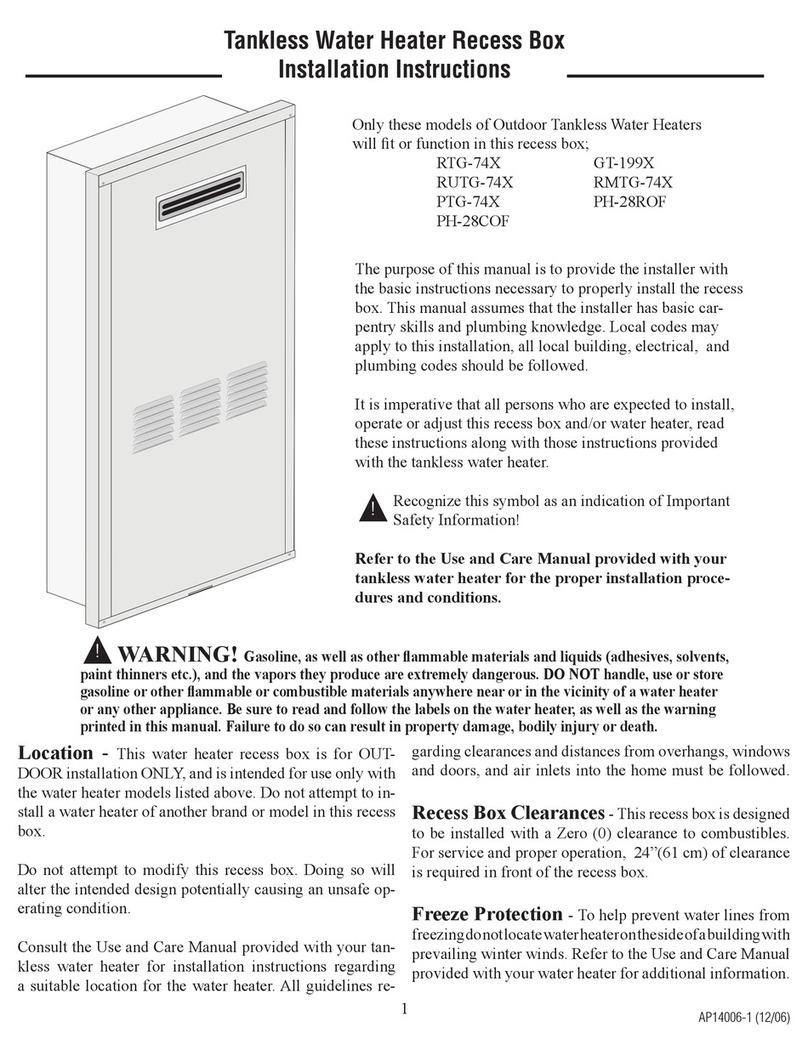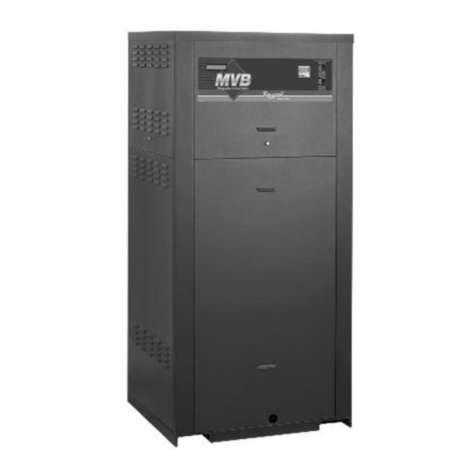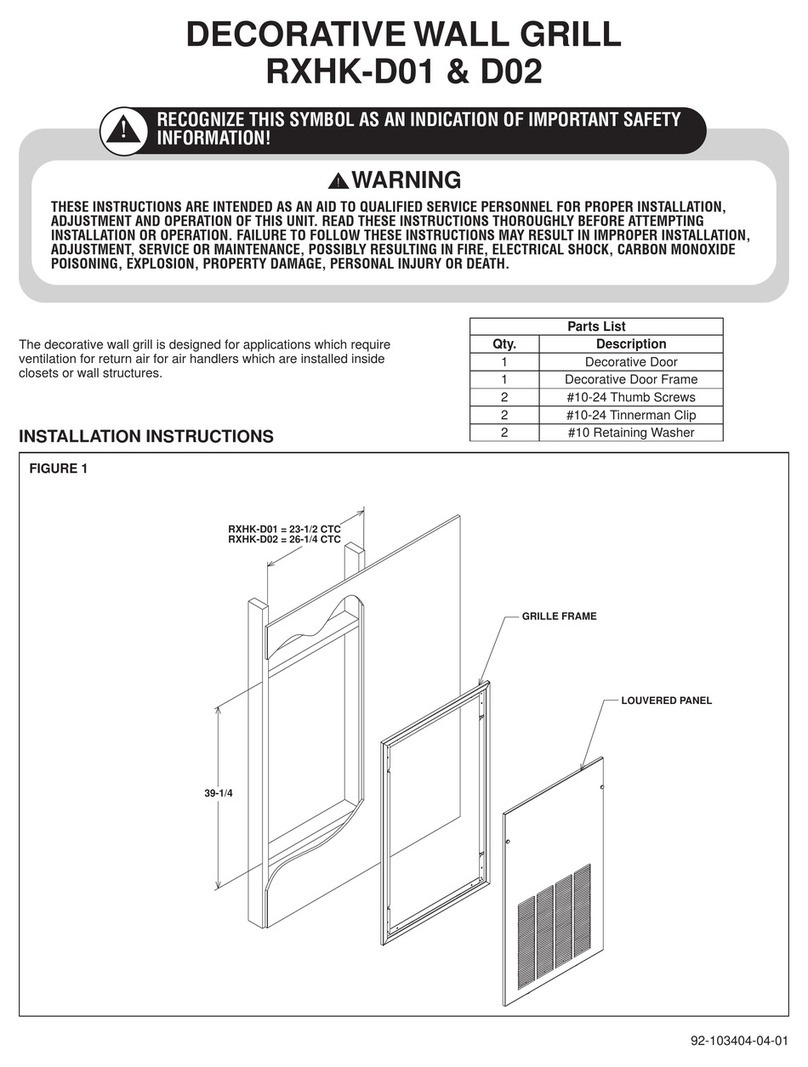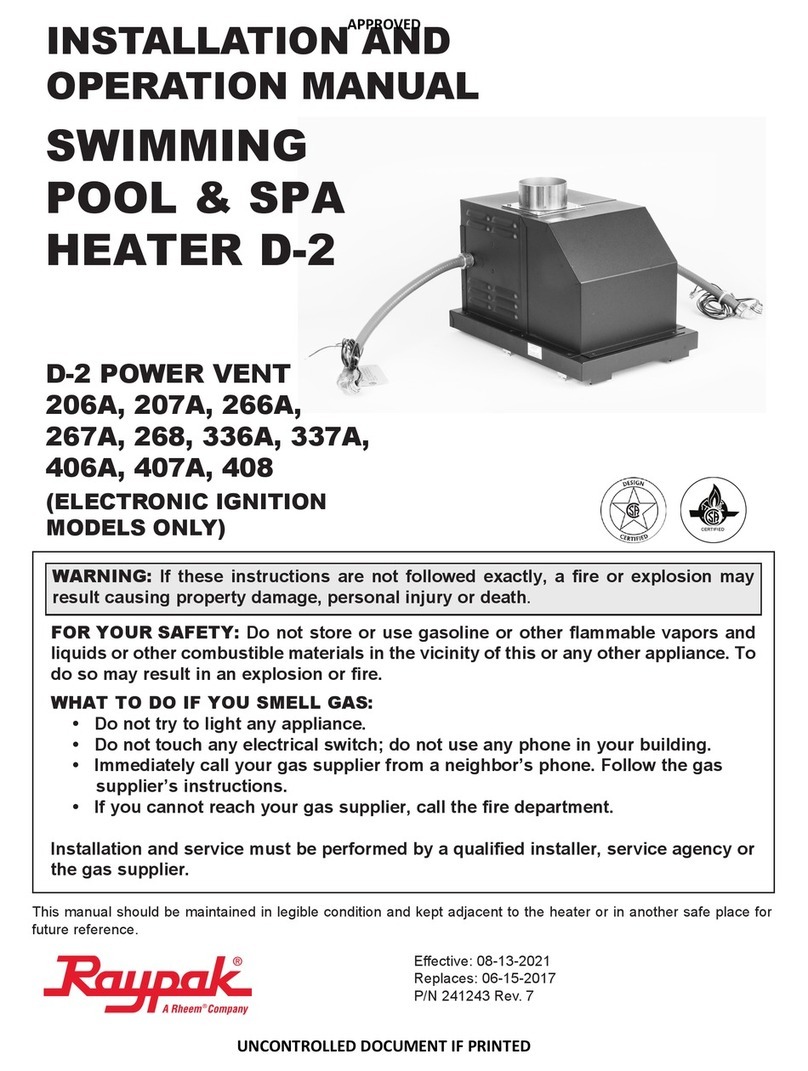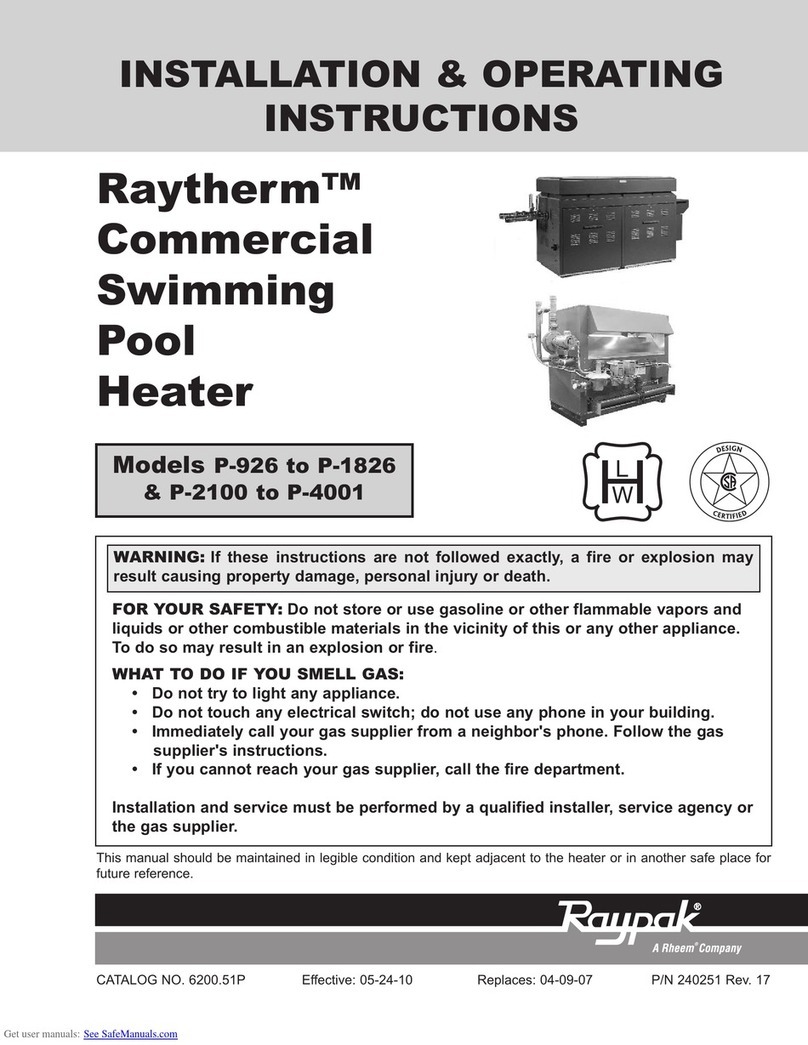
5
2. GENERAL SAFETY
To meet commercial hot water use needs, the high-limit
safety control on this water heater is adjustable up to
210°F (99°C). However, water temperatures over 125°F
(51.7°C) can cause instant severe burns or death from
scalds. When supplying general purpose hot water, the
recommended initial setting for the temperature control is
125°F (51.7°C).
Safety and energy conservation are factors to be
considered when setting the water temperature on the
thermostat. The most energy-ecient operation will result
when the temperature setting is the lowest that satises
the needs of the application.
Water temperature over 125°F (51.7°C) can cause instant
severe burns or death from scalds. Children, disabled and
elderly are at highest risk of being scalded.
• Feel water before bathing or showering.
• Temperature limiting valves are available.
NOTE: When this water heater is supplying
general-purpose hot water for use by individuals, a
thermostatically controlled mixing valve for reducing
point-of-use water temperature is recommended to
reduce the risk of scald injury. Contact a licensed plumber
or the local plumbing authority for further information.
Maximum water temperatures occur just after the
heater’s burner(s) have shut-o. To determine the water
temperature being delivered, turn on a hot water faucet
and place a thermometer in the hot water stream and read
the thermometer.
Water temperature over 125°F can
cause instant severe burns or death
from scalds.
Children, disabled, and elderly are
at highest risk of being scalded.
See instruction manual before set-
ting temperature at water heater.
Feel water before bathing or show-
ering.
Temperature limiting valves are
available, see manual.
Time/Temperature Relationships in
Scalds
The following chart details the relationship of water
temperature and time with regard to scald injury and
may be used as a guide in determining the safest water
temperature for your applications.
Water Temp. Time to Produce Serious Burns
120ºF (48.9°C) More than 5-Minutes
125ºF (51.7°C) 1-1/2 to 2-Minutes
130ºF (54.4°C) About 30-Seconds
135ºF (57.2°C) About 10-Seconds
140ºF (60.0°C) About 5-Seconds
145ºF (62.8°C) About 3-Seconds
150ºF (65.6°C) About 1-1/2-Seconds
155ºF (68.3°C) About 1-Second
Table courtesy of the Shriner's Burn Institute
Table A. Time to Produce Serious Burn
3. COLD WATER START
It is commonly known that prolonged internal condensation
will dramatically shorten the life of standard eciency
boilers. While Raypak boilers can operate without harmful
condensation at lower inlet water temperatures than the
competition, there are still applications that require reliable
protection against harmful condensation caused by
frequent, extended, cold water start-ups. Raypak's Cold
Water Start protection system utilizes a proportional three-
way valve to bypass water from the boiler outlet to the inlet
during start-up, when the system return water temperature
is below the minimum acceptable level.
This approach:
• continuously monitors and adjusts inlet water
temperature to prevent condensation.
• regulates the minimum inlet water temperature
during system start-up.
• activates an alarm and/or shuts down the boiler if the
minimum inlet water temperature is not achieved.
• eliminates jobsite setup with proprietary self-tuning
controller and system-matched components.
• allows high-temperature system operation without
cycling on the high-limit.
ACAUTION: The Cold Water Start package is ONLY
supported for closed-loop hydronic applications. Do not
use for domestic hot water systems, or pool systems.



















